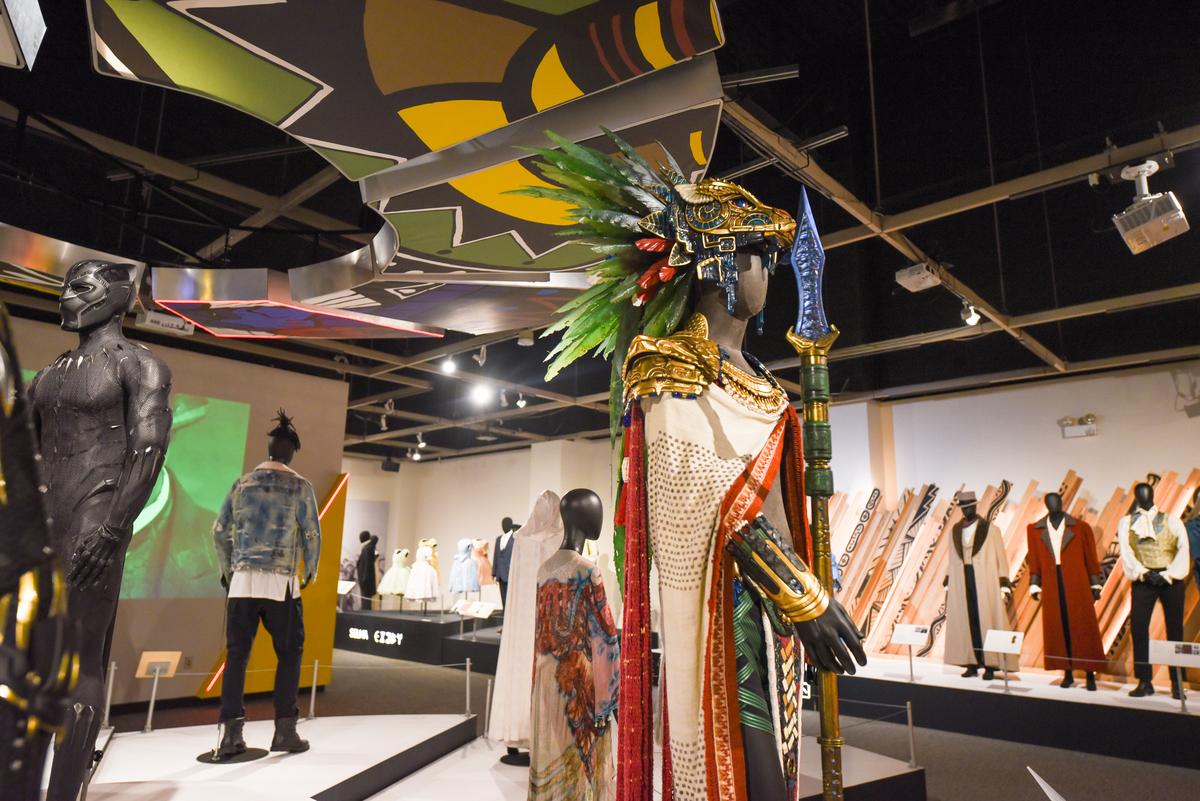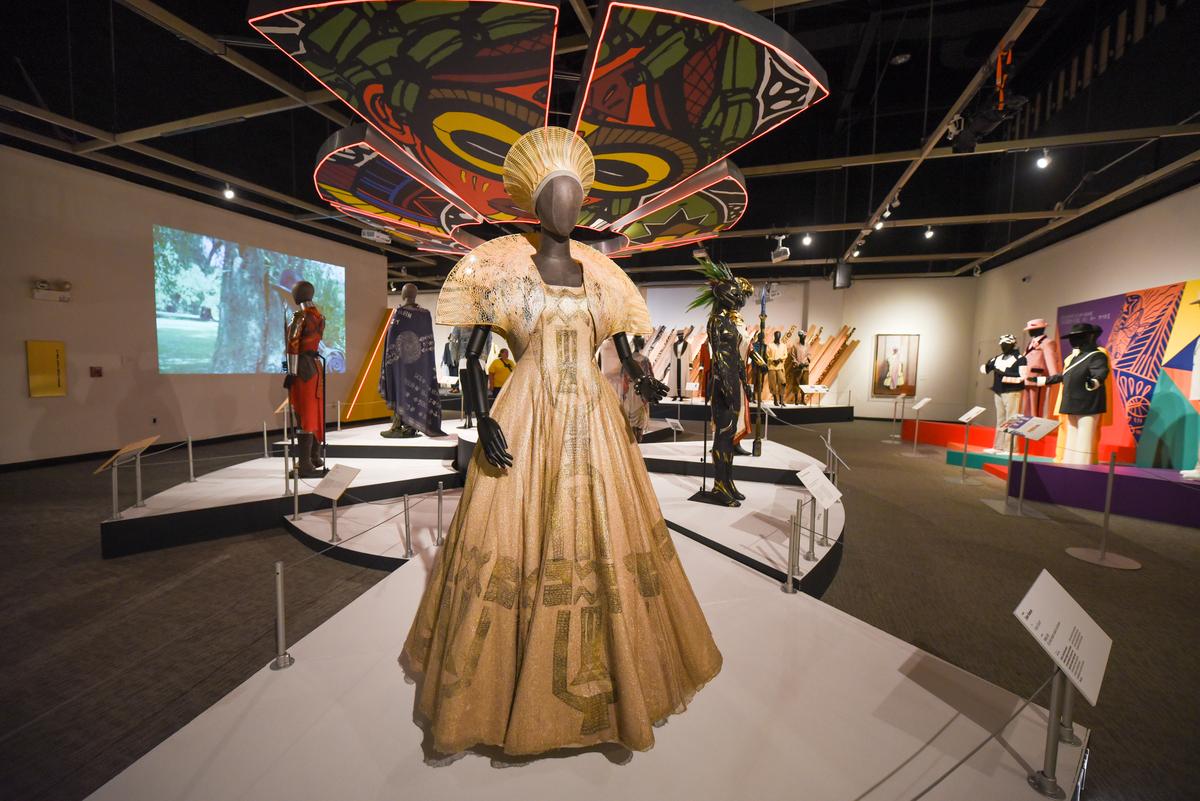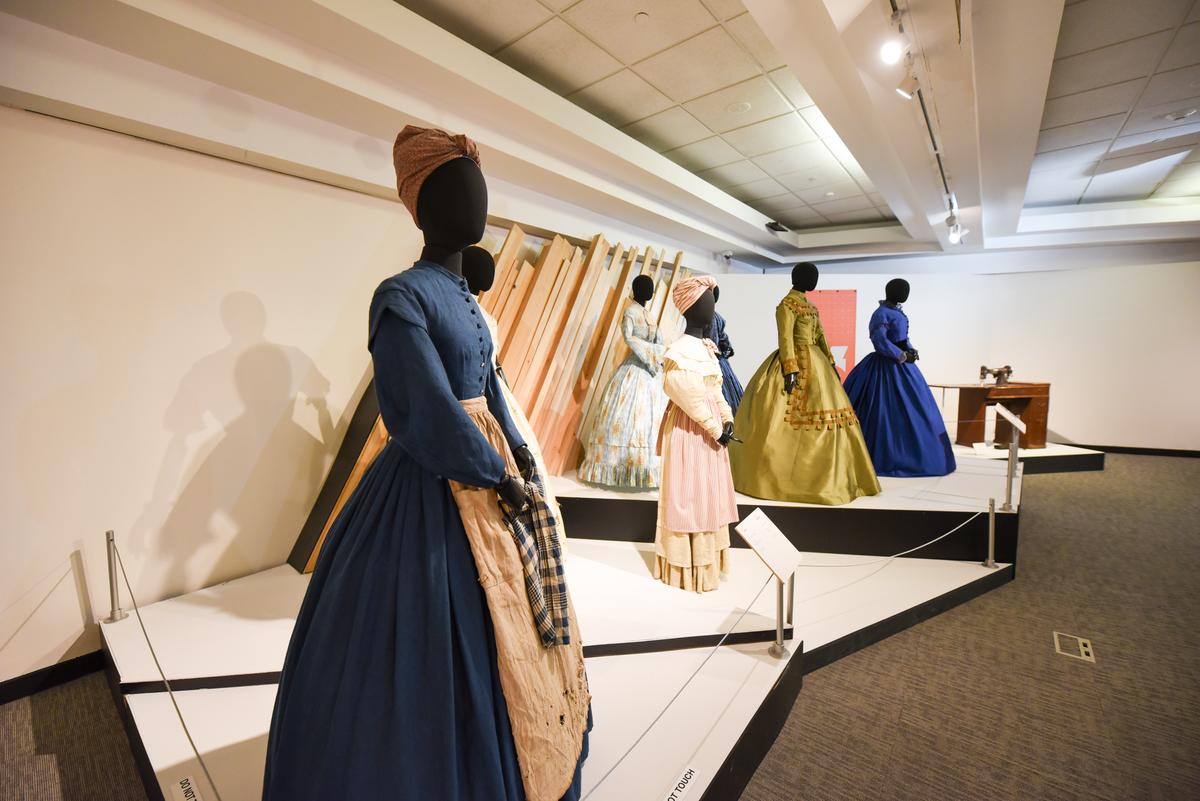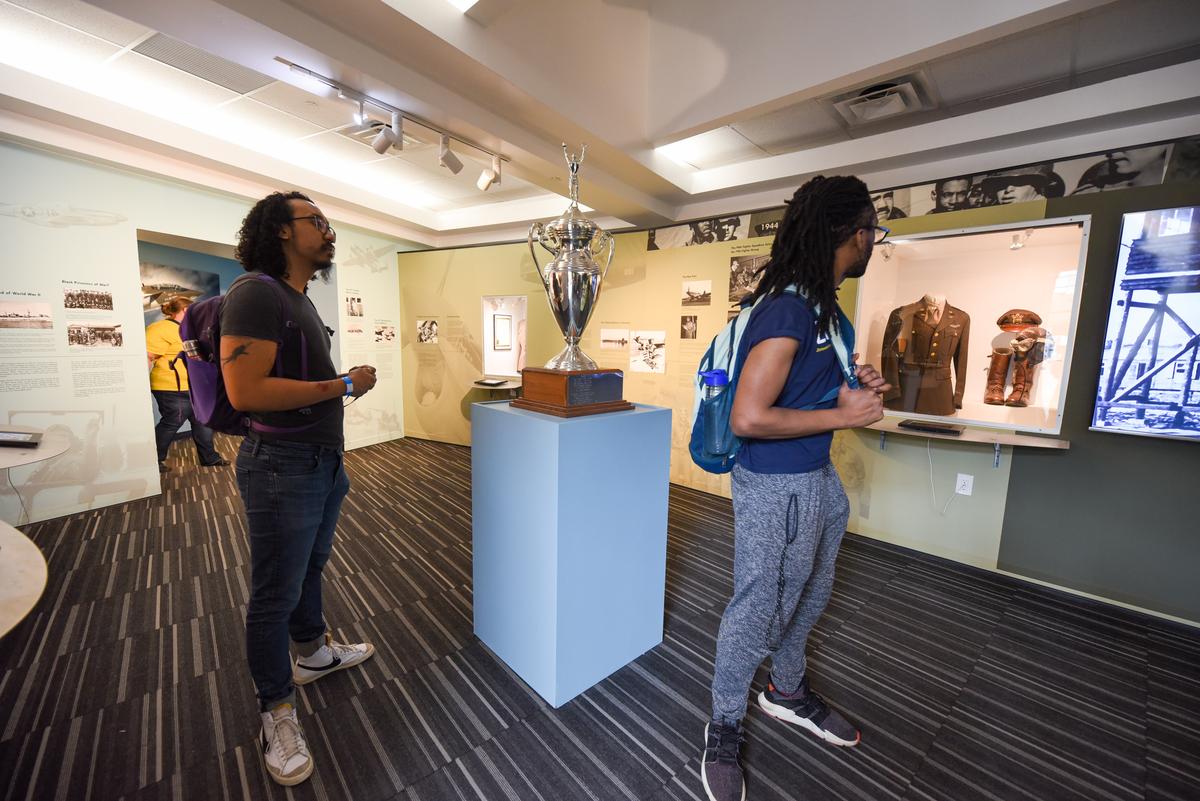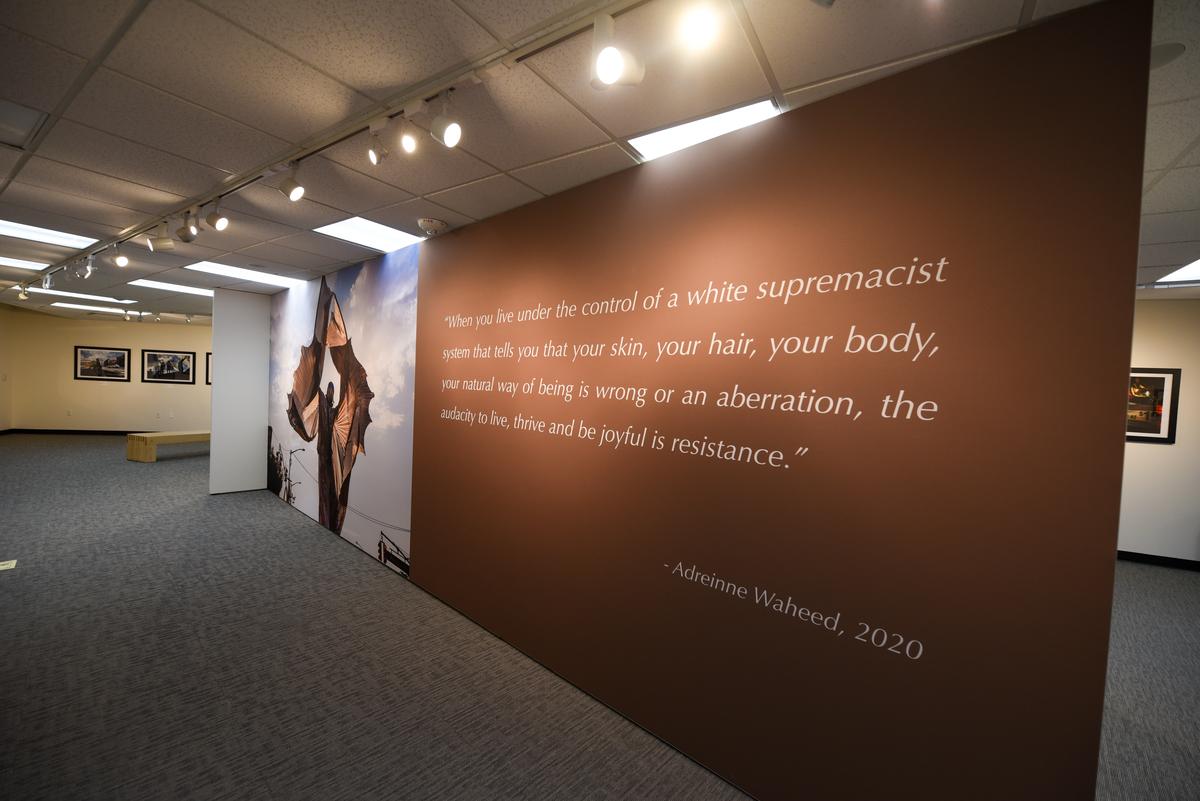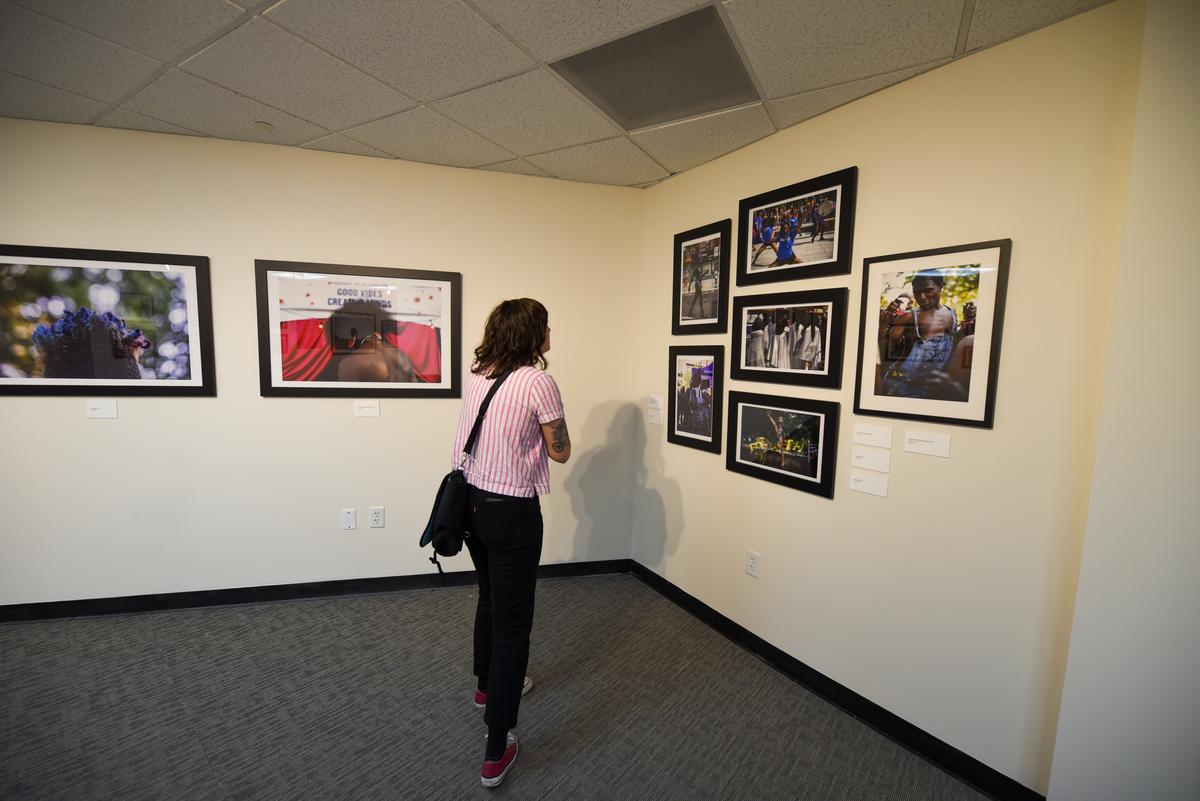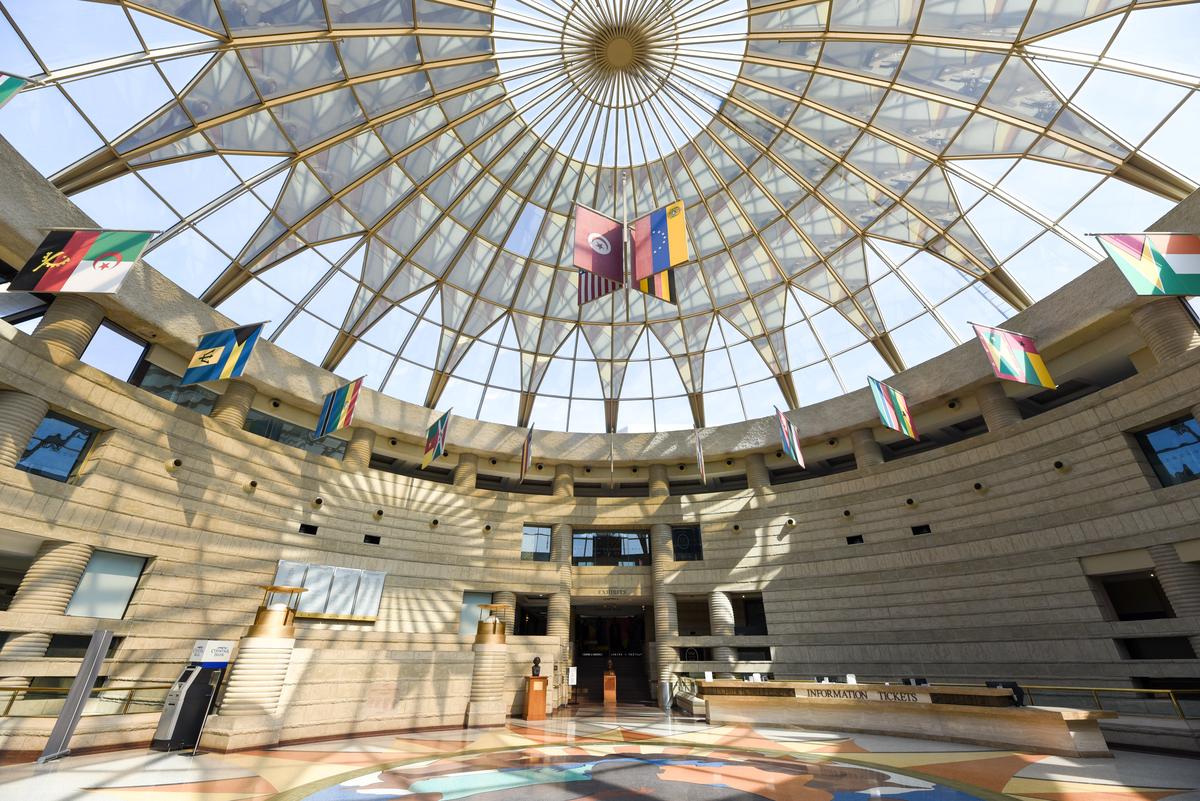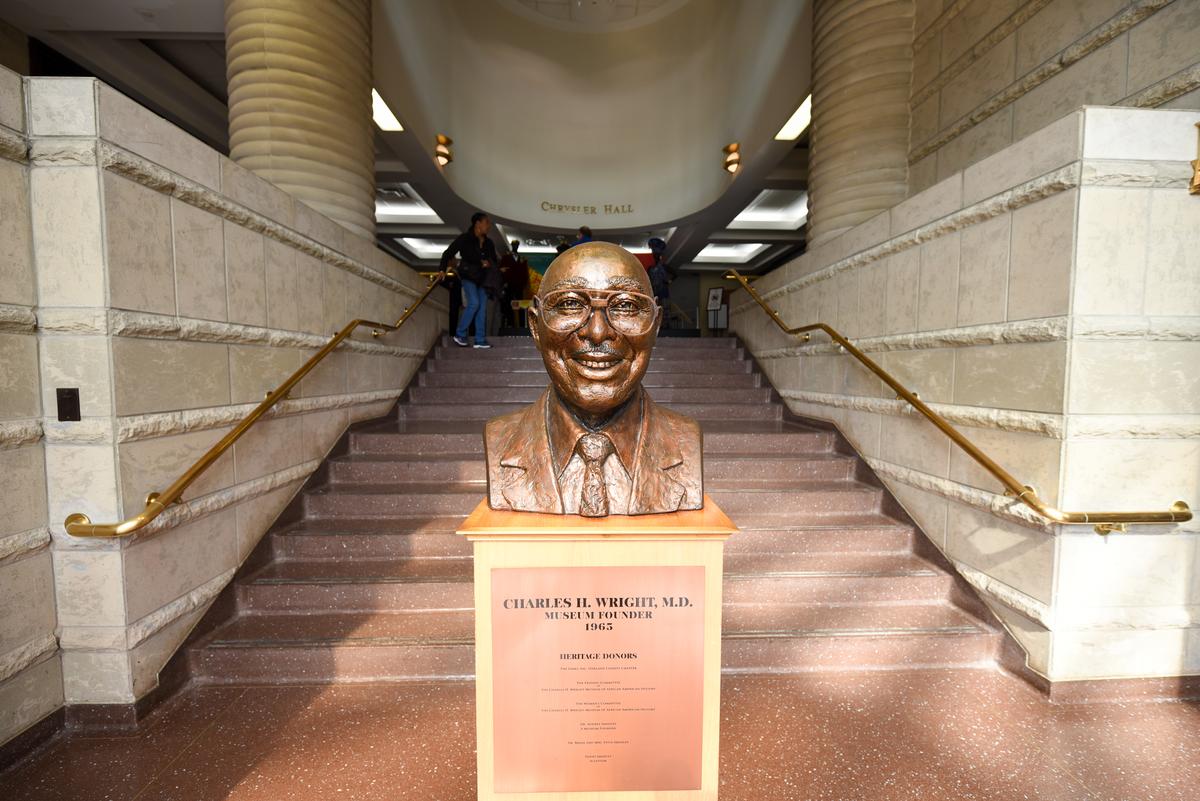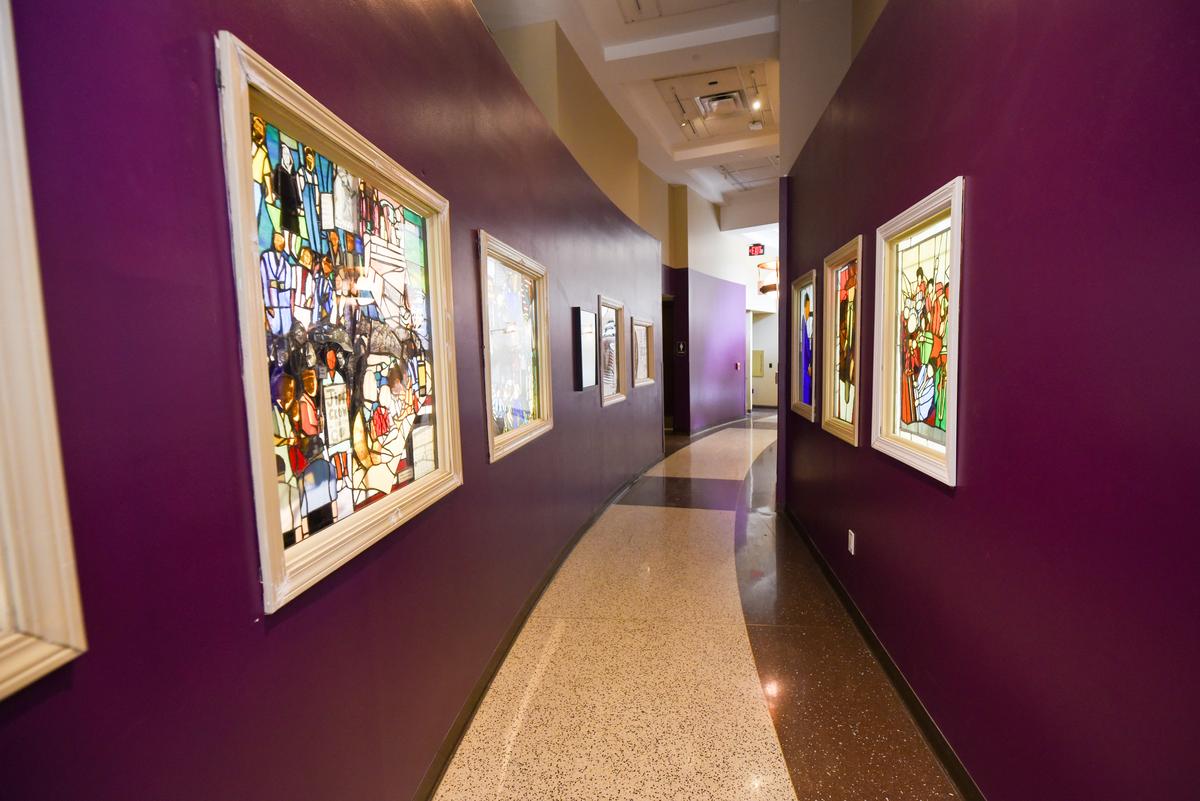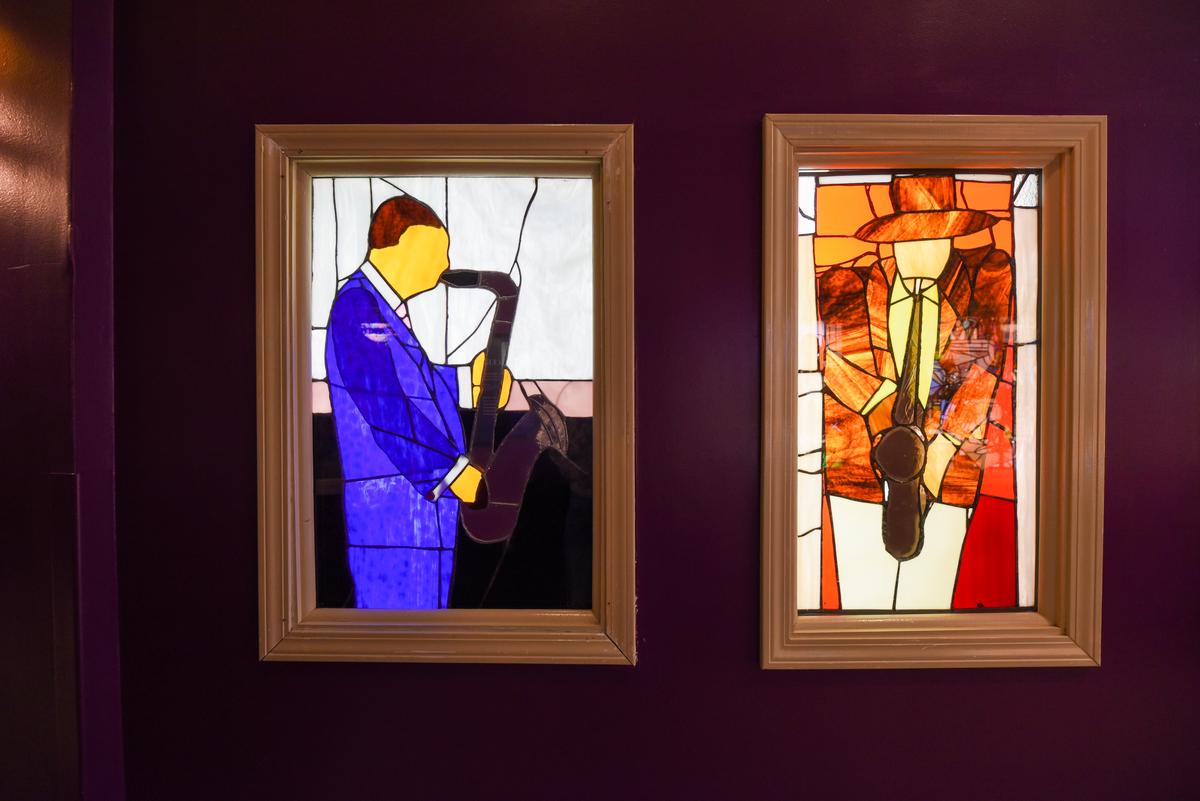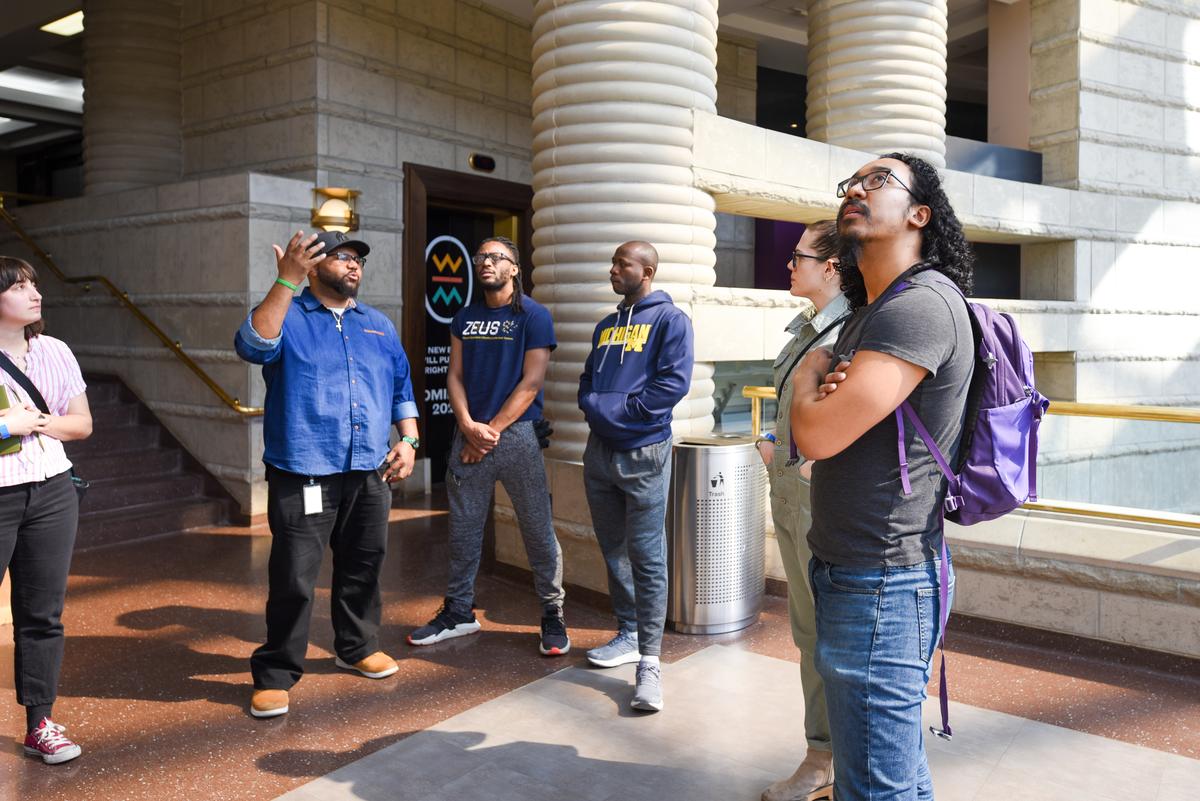Students and ECE staff celebrate Black History Month
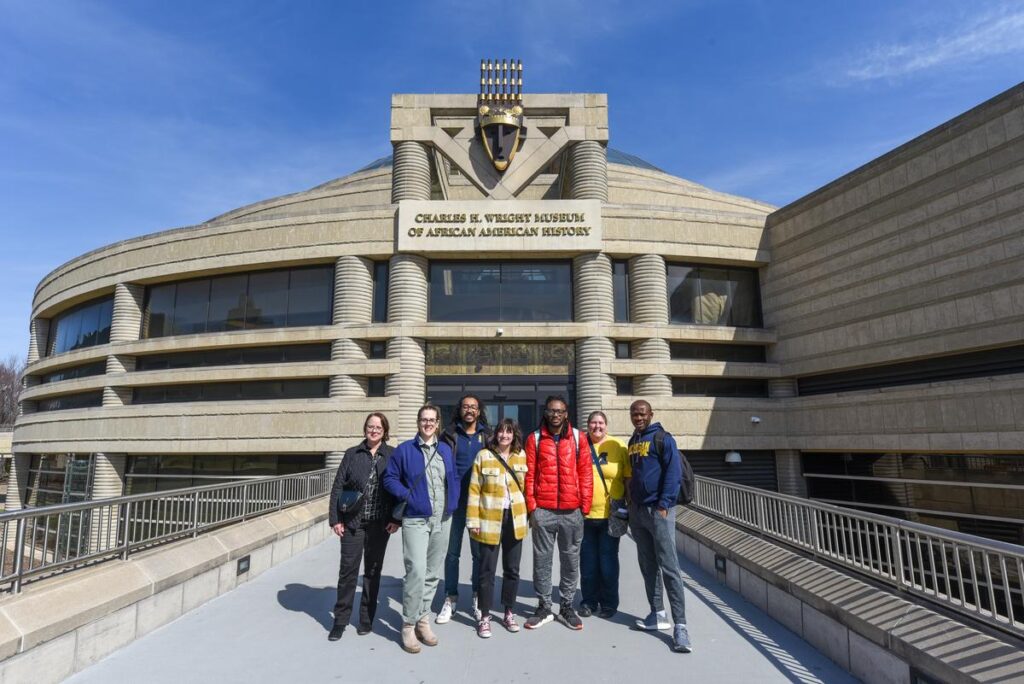
“Detroit has always been at the center of social change,” Jonathan Jones told visitors to the Charles H. Wright Museum of African American History, where he is Manager of Youth & Family Programs.
Among those visitors were ECE students and staff, who visited the museum in celebration of Black History Month.
Before arriving at the museum, the group had lunch at Ima Izakaya, a restaurant serving Japanese-inspired cuisine in the historic Corktown district of Detroit. Corktown is the oldest existing neighborhood in Detroit, a kaleidoscope of cultures grown from diverse immigrant communities over the years since its establishment in the 1840s. Ima Izakaya was voted the 2023 #1 Black-owned restaurant in Detroit by locals.
From there, the group headed to the Wright Museum for a guided tour of the main exhibit, “And Still We Rise,” named after a famous Maya Angelou poem. Jones led an engaging tour that began at the replica skeleton of the diminutive hominin Dinkinesh, more commonly known as Lucy. Dinkinesh means “you are marvelous” in Amharic, the language of Ethiopia, where her fossilized skeleton was found.
From the prehistoric ancestors of humankind to more recent greats such as engineer and astronaut Mae C. Jemison, the exhibit chronicles African American history in an immersive visual display. Along the way, ECE visitors learned about the Kingdom of Benin, which was filled with marvelous innovations in technology, agriculture, and art from the 1200s to 1800s in current-day Nigeria.
The exhibits serve as a good reminder of the history of our country with regards to race, the progress we have made, and the work that still needs to be done.
Demba Komma, ECE PhD student
The exhibit also took them on a disconcerting but powerful journey from the West coast of Africa to Annapolis, Maryland, through the transatlantic slave trade. On a reproduction of a colonial plantation in the U.S., attendees caught a glimpse of “Black Moses” Harriet Tubman and her work with the Underground Railroad. The scene unfolded under the night sky and sparkling Big Dipper, which pointed the way to freedom for enslaved African Americans.
Finally, the tour group arrived at a model of the thriving Black Bottom and Paradise Valley neighborhoods set in 1920s to 1950s Detroit, where Black communities and businesses flourished prior to their displacement and gentrification in the 1960s.
In 1963, the Detroit Walk to Freedom was the largest civil rights demonstration up to that time. The Rev. Dr. Martin Luther King Jr. was part of that demonstration, and he gave an early version of his famous “I Have a Dream” speech. Later that year, Malcolm X also gave one of his most famous speeches, “Message to the Grassroots,” in Detroit.
The guided tour concluded at a large mosaic of the Detroit skyline, composed from smaller photos of influential Black Americans over time. “Without all the little things, you can’t see the big one,” Jones pointed out. “That’s like community.”
In addition to “And Still We Rise,” students and staff had the opportunity to view three other exhibits. “Afrofuturism in Costume Design” featured intricate costumes designed by Ruth E. Carter, including attire from Malcom X, the 2016 reboot of Roots, and the Black Panther franchise. The Wright Museum has been home to the Tuskegee Airmen National Museum since 2021, telling the story of the U.S.’s first all-Black air fighter squadron, who served in WWII.
Finally, the group viewed Adreinne Waheed’s photography exhibit entitled “The Audacity to Thrive,” capturing the ways that “Black communities leverage fashion, play, music, and [the] collective pursuit of joy and love as necessary sites for resistance.” Her exhibit showcases and celebrates the resilience, joy, love, and beauty of Black people and communities.
For the ECE community, an organized day trip for Black History Month was one of many staff efforts to help students feel celebrated and included. “This was our first time offering a day-long event, but organizing events for the students is something we aim to do year round,” said Kristen Thornton, ECE Graduate Coordinator.
Some members of the group were experiencing the Wright Museum for the first time, but the trip was a valuable experience even for repeat visitors like Demba Komma, ECE PhD student. “I joined the trip because I love the Charles H. Wright Museum and every visit leaves you with a distinct impression,” he said, “The exhibits serve as a good reminder of the history of our country with regards to race, the progress we have made, and the work that still needs to be done.”
The trip also offered staff the opportunity to mingle with current students while learning about African American history.
“I thought this trip would be a good chance to get to know some of the U-M community better. Taking ‘field trips’ outside of work responsibilities is a way for people to share more of themselves,” said Erika Booms, ECE administrative assistant, “This was my first opportunity to participate, as a working adult, in a venture that was specifically focused on honoring Black History Month—so I felt lucky to learn more about something so important.”
 MENU
MENU 